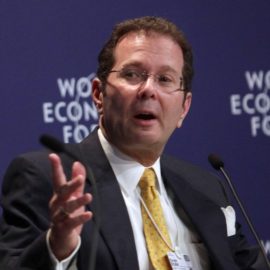

This article is an excerpt from the Shortform book guide to "Friends, Lovers, and the Big Terrible Thing" by Matthew Perry. Shortform has the world's best summaries and analyses of books you should be reading.
Like this article? Sign up for a free trial here.
Why did Matthew Perry go to rehab? How did God help Perry achieve sobriety even through turbulent times?
During his time on Friends, actor Matthew Perry went to rehab several times to get sober. Perry describes these frequent visits in his memoir Friends, Lovers, and the Big Terrible Thing and how his relationships affected his sobriety.
Discover how Matthew Perry’s rehab journey was affected by his star-studded fame and spirituality.
An Addiction/Recovery Rollercoaster
Getting cast in Friends was a turning point in Perry’s life. On the one hand, he believes it saved his life. He staved off the worst of his addiction (for example, avoiding heroin because he knew it would be impossible to quit) and tried to stay healthy because he loved his job and he knew how lucky he was to have it. On the other hand, Perry feels that God upheld his end of the bargain—made him famous—but also made sure to collect Matthew’s end and put him through challenges that almost broke him.
During Friends’ 10-year run (1994-2004), Matthew Perry’s rehab stays were frequent. The first time was in 1997, but he went back to drinking soon after. In 2000, he was diagnosed with pancreatitis as a result of heavy drinking. He received treatment but he went back to Vicodin and alcohol when he recovered.
(Shortform note: Perry’s frequent rehab stays and subsequent relapses reflect a fact of addiction recovery: Relapse is to be expected. People who are in recovery from drug or alcohol abuse often relapse several times, even after years of being sober. It doesn’t mean they’ve failed at recovery—it just means that recovery is an ongoing challenge. Interestingly, the rates of relapse among people suffering from addiction are around 50%, similar to those of people suffering from other chronic illnesses, such as asthma and hypertension.)
Perry tried and failed to keep his drinking from affecting his job. He says he was never drunk on set, but he was frequently hungover, and his costars became aware of his problem. At one point, Jennifer Aniston (who played Rachel in Friends) told him they could smell the alcohol on him and they were worried. The viewers also had some insight into his health thanks to his noticeable weight fluctuations. He says that the seasons where he’s underweight are the ones where he was addicted to pills, and the seasons where he’s overweight are the ones where he’s drinking too much.
When he realized the cast and crew of Friends were onto him, he started working on a movie, Serving Sara, to escape the show’s set. His performance in the movie was so bad that he later had to dub over his lines because he had been slurring them. He also had to pay the production for damages because they needed to stop filming so he could go to rehab.
At one point during the filming of Serving Sara, his then-girlfriend told him he needed help. She took him to a detox center where he first read the big book of Alcoholics Anonymous. Reading the book helped him understand he was being narcissistic and selfish. He tried going back to work on the set of Friends after three weeks, but his father intervened. He called the producers and threatened to pull Matthew off the show if they insisted on having him back before he was well.
After a month in the detox center, he was sent to a long-term care facility because he still needed support. He ended up staying there for three months, but he simultaneously returned to work. In fact, he was living at the center when the highest point of his character’s story arc aired: the wedding of Chandler and Monica.
After that stay in the treatment center, he was sober for two years (2001-2003), which he believes were two of the best years of his life. During that time, he was nominated for an Emmy and he found purpose in helping other people get sober. But Perry’s struggle with addiction wasn’t over. In fact, it would get so intense that he would even have a spiritual experience.
In 2003, a relationship he was in ended badly and he went back to pills. At one point, he was unable to sleep and took eight Xanax pills at once. Standing in his kitchen, he prayed to God for help because he knew that going from eight pills to zero in a matter of hours was dangerous and might even kill him. After praying, he saw a golden light and felt a warmth around him that he attributed to God. After the light and warmth were gone, he cried with relief because he felt he had been in the presence of God.
A Possible Interpretation of Perry’s Spiritual Experience
Perry’s spiritual experience might be an example of grace. According to psychotherapist M. Scott Peck, author of The Road Less Traveled, grace refers to God’s force that moves through us. However, people are not always open to noticing grace so manifestations of it aren’t immediately obvious to them. You can recognize manifestations of grace because:
- They contribute to and protect the growth of the human spirit. Perry’s encounter with the golden light protected his spirit because it helped him feel saved by God.
- They don’t make total sense or they completely defy the laws of nature. The light Perry saw couldn’t be clearly explained by laws of nature.
- They do not originate in the conscious mind and they cannot be deliberately summoned by the conscious will. Perry was under the influence of a high dose of opioids, so he couldn’t consciously originate the experience he had.
Trapped in an Anxiety Loop
Perry’s spiral into substance abuse shows how his anxieties about work, substance abuse, and people’s perceptions of him all contributed to his deepening addiction. In Unwinding Anxiety, Judson Brewer explains anxiety’s tendency to reinforce itself by eliciting behaviors that lead to more anxiety. Brewer explains that once we feel anxious, anxiety becomes a trigger for new (often unhealthy) behavioral loops that incorporate more and more unhealthy behaviors. In Perry’s case:
- Trigger: He felt anxiety about his costars knowing he had a substance abuse problem, plus he likely felt anxiety about how much he was drinking and how his drinking might be harming his career.
- Behavior: More worrying, more drinking, and new harmful habits like taking pills to hide a hangover.
- Result: He experienced more anxiety than ever before so he decided to flee the Friends set. Then he experienced the physical harm of the substance abuse plus the negative impact on his work.
- Lesson: At this point, he likely started judging himself for how he handled the situation, for how much he drank, and even for feeling anxiety in the first place. This judgment then fed more cycles of anxiety.

———End of Preview———
Like what you just read? Read the rest of the world's best book summary and analysis of Matthew Perry's "Friends, Lovers, and the Big Terrible Thing" at Shortform.
Here's what you'll find in our full Friends, Lovers, and the Big Terrible Thing summary:
- Actor Matthew Perry's autobiography about health, loneliness, and addiction
- Words of hope for those who are currently struggling with substance abuse
- A look into Perry's childhood, his time on Friends, and his life after Friends






